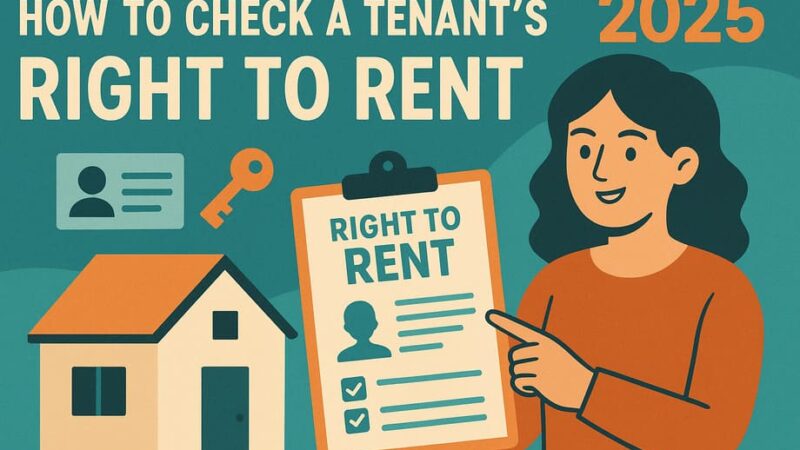The Complete Guide to Letting to Students in the UK

Letting to students can be one of the most profitable rental strategies for UK landlords. With over 2.75 million students in higher education, demand is strong and consistent. Here’s everything you need to know about renting to students successfully.
Why Let to Students?
Higher Returns
- Student properties typically achieve 8-10% yields
- Rents increased by 14.6% between 2021/22 and 2023/24
- Premium rates compared to standard residential lettings
Reliable Demand
- Students rent for minimum 12 months (usually academic year)
- Less time finding new tenants
- Strong competition in university areas
- Consistent annual demand cycle
Predictable Rental Patterns
- Peak booking period: January to March
- Academic year tenancies provide structure
- Students give good notice when leaving
Best Locations for Student Properties
Prime Locations
- Within walking distance of university campus
- Good public transport links to campus
- Established student areas with supporting amenities
- Near shops, entertainment, and student services
Research Tips
- Check university expansion plans
- Look for new course offerings
- Consider international student recruitment
- Evaluate transport connections (bus routes, cycling paths)
Top University Cities
- London, Manchester, Birmingham, Edinburgh (highest rents)
- Emerging university towns (better entry opportunities)
- Areas with expanding higher education sectors
What Type of Property Works Best?
Ideal Properties
- 3-6 bedroom houses (optimal for management vs income)
- Large communal spaces (kitchen and lounge)
- Multiple bathrooms/toilets
- Garden space
- Good natural light and study areas
Property Types That Work
- Traditional terraced houses near universities
- Converted flats for smaller groups
- Purpose-built student accommodation (PBSA)
- House shares (most popular option)
Understanding Your Student Tenants
Domestic Undergraduates
- Seek shared accommodation with friends
- Value location and social spaces
- Budget-conscious
- Need group-friendly layouts
International Students
- Often need individual tenancies
- Value included utilities and furnished properties
- Parents/sponsors may be involved in decisions
- Need proximity to university support services
Postgraduate Students
- Prefer quieter environments
- Want better study facilities
- Willing to pay premiums for comfort
- More independent living preferences
Legal Requirements and Compliance
Houses in Multiple Occupation (HMO)
- Required if 3+ unrelated tenants share facilities
- Need HMO licence in most areas
- Additional safety and space standards
- Regular inspections required
Essential Certificates
- Gas Safety Certificate (annual)
- Electrical Installation Condition Report (every 5 years)
- Energy Performance Certificate (minimum rating E)
- Fire safety assessments for HMOs
Deposit Protection
- All deposits must be protected
- Consider individual vs joint deposits
- Clear documentation required
- Fair damage allocation procedures
Right to Rent Checks
- Check all tenants and guarantors
- Particular care with international students
- Maintain current records throughout tenancy
- Understand visa restrictions
Furnishing Your Student Property
Essential Bedroom Items
- Robust single bed with good mattress
- Study desk and chair
- Wardrobe or adequate storage
- Good lighting for studying
- Curtains or blinds
Kitchen Requirements
- Large fridge-freezer
- Cooker with multiple hobs and oven
- Microwave
- Adequate storage for multiple users
- Dining table and chairs
- Basic cooking utensils
Communal Areas
- Comfortable seating for all tenants
- TV and entertainment system
- Good lighting
- Storage solutions
- Study-friendly quiet spaces
Technology Essentials
- High-speed broadband (crucial)
- Comprehensive Wi-Fi coverage
- Sufficient power outlets
- Consider smart home features
Setting Up Tenancies
Tenancy Types
- Joint tenancies: Single agreement, all tenants responsible
- Individual tenancies: Separate agreements per room
- Fixed-term: Aligned with academic year (10-12 months)
Guarantor Requirements
- Essential for most student tenants
- Usually parents or sponsors
- Full referencing required
- Clear payment responsibilities
Rent Payment Options
- Termly payments (popular with students)
- Monthly payments
- Flexible scheduling for student loan timing
- Clear late payment procedures
Marketing to Students
Timing Your Marketing
- Start marketing January-March for September lets
- Early marketing gets better results
- Academic year calendar awareness crucial
Effective Channels
- University accommodation lists
- Student-specific websites
- Social media marketing
- University partnership programmes
Marketing Materials
- High-quality photos of all rooms
- Virtual tours (essential for international students)
- Detailed property descriptions
- Group booking friendly information
Managing Student Properties
Regular Maintenance
- More intensive than standard lettings
- Quarterly inspections recommended
- Preventive maintenance schedules
- Quick response to issues
Common Challenges
- Higher wear and tear
- Noise complaints from neighbours
- Property damage beyond normal wear
- Rent collection timing issues
Summer Period Options
- Holiday lets
- Language school students
- Conference delegates
- Extended tenancies for year-round students
Financial Considerations
Calculating Returns
- Account for summer void periods
- Higher maintenance costs
- Academic year rental patterns
- Realistic yield expectations
Cash Flow Management
- Termly rent receipts
- Concentrated maintenance periods
- Seasonal expense patterns
- Adequate reserve funds
Insurance Requirements
- Specialist student lettings insurance
- Higher contents coverage
- Liability insurance for HMOs
- Consider rent protection insurance
Building Relationships
University Partnerships
- Get on approved landlord lists
- Build relationships with accommodation offices
- Connect with student unions
- Join professional accreditation schemes
Professional Standards
- Responsive communication
- Fair dispute resolution
- Transparent processes
- Consistent service quality
Common Mistakes to Avoid
Property Selection Errors
- Choosing properties too far from campus
- Insufficient communal space
- Poor transport links
- Ignoring local competition
Management Mistakes
- Inadequate furniture quality
- Poor internet connectivity
- Delayed maintenance responses
- Unclear tenancy terms
Financial Oversights
- Underestimating maintenance costs
- Poor summer period planning
- Inadequate insurance coverage
- Unrealistic yield expectations
Maximising Success
Best Practices
- Professional approach to all interactions
- Clear communication channels
- Proactive maintenance programmes
- Fair and transparent processes
Long-term Strategy
- Build reputation in local market
- Develop university relationships
- Consider portfolio expansion
- Plan exit strategies
Staying Competitive
- Monitor local market rates
- Keep properties well-maintained
- Upgrade facilities regularly
- Respond to changing student needs
The Bottom Line
Letting to students offers excellent returns for landlords who understand the market. Success requires:
- Choosing the right location and property type
- Understanding legal requirements and compliance
- Providing appropriate furnishing and facilities
- Professional management and maintenance
- Building positive relationships with tenants and universities
With proper planning and management, student lettings can provide higher yields, reliable income, and the satisfaction of supporting education while building a profitable property business.
Students need quality accommodation, and professional landlords who provide it are rewarded with strong returns and consistent demand. Whether you’re considering your first student letting or expanding your portfolio, this market offers compelling opportunities for those prepared to do it properly.
Last Updated on July 23, 2025 by James Cartwright







